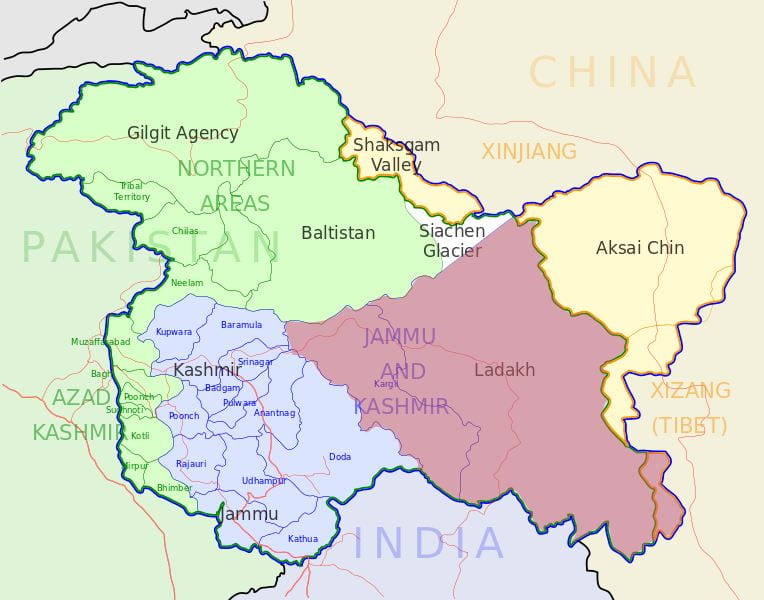
The day after the sun set on my Grade 9 days, I packed up my bags and flew to India for the UWCSEA trekking trip to Ladakh.
We were mostly trekking steep hills at high altitude and admiring views, but I also learned the new skills of walking safely through knee-high rivers and climbing down extremely steep slopes. The clear mountain air and distance from cities also allowed for some attempts at navigation by the stars.
But I found that it was the interpersonal challenges that I struggled with. It was an 18-day trip with mostly people I’d never seen before, and so were therefore easy to depersonalise. I noticed after the trip that I therefore often didn’t assume positive intentions of people, and got snappy or rude. This was often because I assumed that people were as driven, fit, or motivated as I was, without having talked to them. Essentially, I found empathy difficult.
However, I found it easy to be kind to the sick or people I was already acquainted with. I would try to stay on task so I can finish faster and help them (e.g. setting up tents). Also, when I got to destinations faster, I would cheer on groups that arrive later. So I was good at being supportive of others when I didn’t have to understand them well, or could see them as a projection of myself. For example, I know that I would appreciate someone supporting from ahead on a summit, so I did the same for others.
Clutched in the scarred mountain feet, I constantly had to think about the group, as unlike in the shade of the HDB flats, I relied on it, almost for survival. There was also the matter of not being able to avoid others. Our OED leaders were also constantly making us reflect on the group and our contributions to it. These prompted reflections hence gave a fresh perspective and focus to my internal musings. There was also teacher feedback making me confident in some of these skills.
In Ladakh, the most observable change in myself was in how I approached the lilac peaks. On this trip, I found I became more confident in my ability to use them to rise higher, rather than being defeated by their steepness. I became less prone to thinking “I can’t do this”, and reminding myself more about how a lot more is physically possible of the human body than one expects. With this, my fitness increased. Arguably more importantly, there was also some spiritual growth. I felt much more that I should try to see things for what they are, without automatically shrouding it in my own interpretations. By reading 2 Buddhism-related books and being in such harsh surroundings, I could reflect more on how I related to myself (why was I so fixated on this concept of “I” and being separated from the world around me?). By thinking more of my connection to the universe, I also grew more conscious of how I was inexplicably linked through DNA far into the past and some unknown amount into the future.
I felt nice to do all this where the local culture does the same, and use it to construct an NYAA question: What role does Buddhism play in modern Ladakhi culture and life?
 Map of Ladakh and surrounding areas (Wikimedia Commons)
Map of Ladakh and surrounding areas (Wikimedia Commons)
Ladakh, being very close to Tibet, is unsurprisingly a historical haven for Tibetan Buddhism. The endless knot symbol was visible everywhere in the regional capital Leh, from tourist T-shirts to car park and house gates. Faded and glaring prayer flags cracked above many villages and mountain passes that the group passed through. Stupas (white mounds containing spiritual relics) and prayer mounds littered mountain trails. Buddhism is an everyday fact of life and is everywhere if you knew where to look.
Major Buddhist monuments also become tourist attractions, two of which we visited. At Thiksey monastery, morning prayer in the assembly hall is visitable by tourists, and there was a European group with us the day we visited. We could see both monks as well as boy monks-in-training who looked to be about 7. There was also Shanti Stupa, built in 1991 by Gyomyo Nakamura. Not only does it have religious significance (containing relics of the Buddha), it has panoramic views of Leh and surrounding mountains. Many locals of Leh, international tourists, and pilgrims could be seen circumambulating the stupa. Not only is Buddhism a source of pride that Ladakh shows to the world, spirituality is also shown to still be a major part of at least some people’s lives.
On a deeper level than this, however, is how much Buddhism influences local people’s beliefs and actions. In a presentation about snow leopard conservation, I noted how the local people were said to listen much more to new instructions and advice given to them by monks rather than conservation experts. Spiritual leaders still have major social status in the region, and thought paradigms within the institutions they run could have major impacts on the way surrounding locals conduct their lives. This could be seen when we visited Lamdon Model Senior Secondary School just outside of Leh. The school describes itself on its website as “rendering a yeo-man service to the society in the field of education … under the spiritual guidance and blessing from His Holiness the 14th Dalai Lama“. Lamdon school, while following a similar ideal to UWC with a focus on serving the community and empowering young people, hence does so in a much more Buddhism-focused manner. The impact of the Dalai Lama and the monks is massive, and can and is being used to push for a more positive future.
 A Buddhist temple in Lamdon Model Senior Secondary School
A Buddhist temple in Lamdon Model Senior Secondary School
In conclusion, Buddhism is a source of connection to the past and local culture, a way to connect with others (tourists) in the present, and, a spirituality that could help take Ladakh and humanity far into a bright, gleaming future.

